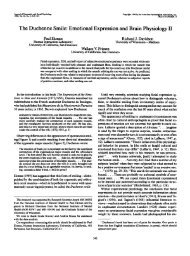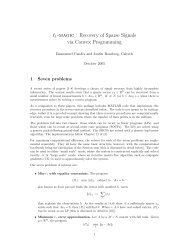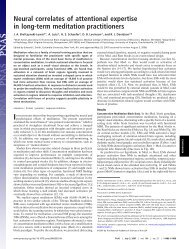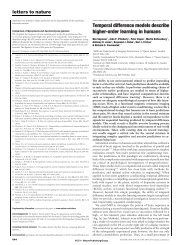Deconvolution Analysis of FMRI Time Series Data - Waisman ...
Deconvolution Analysis of FMRI Time Series Data - Waisman ...
Deconvolution Analysis of FMRI Time Series Data - Waisman ...
Create successful ePaper yourself
Turn your PDF publications into a flip-book with our unique Google optimized e-Paper software.
1.2.3 Numerical SolutionThe output is measured at discrete times. In the following, we will approximate the convolutionintegral by summation over discrete time:y(nt) =nXm=0f(mt)h(nt ; mt)t:We will let t 1, and switch to the more convenient subscript notation:y n ==nXnXm=0m=0f m h n;mf n;m h m :Usually it is the case that the impulse response function decreases to zero with increasingtime. We will assume that the impulse response function is essentially zero for time lagsgreater than p. In this case, the above summation becomes:y n =pXm=0f n;m h m n p:Note that \lag" refers to times into the past that is, h m represents the inuence <strong>of</strong> thestimulus at time point n ; m on the data at time point n.Of course, the measurement process is not perfect. If we assume that the measurementsinclude additive, uncorrelated, Gaussian noise, then we get the sequence <strong>of</strong> randomvariables:Z n =pXm=0h m f n;m + " n n pwhere " niid N(0 2 ). For <strong>FMRI</strong> data, it is <strong>of</strong>ten the case that the measurement can bemodeled by a constant plus linear trend plus noise, in addition to the signal:Z n = y n + 0 + 1 n + " n= 0 + 1 n + h 0 f n + h 1 f n;1 + h p f n;p + " n ,for n = p p +1::: N ; 1:Using the matrix notation2 3 23Z p1 p f p f 0ZZ = 6p+147. 5 X = 1 p +1 f6p+1 f 147. . . . .Z N;1 1 N ; 1 f N;1 f N;p;125 = 643 0 1h 07.h p25 " = 643" p" p+17. 5 :" N;18



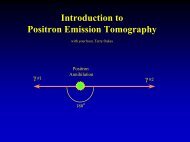
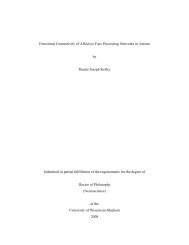
![[F-18]-L-DOPA PET scan shows loss of dopaminergic neurons](https://img.yumpu.com/41721684/1/190x146/f-18-l-dopa-pet-scan-shows-loss-of-dopaminergic-neurons.jpg?quality=85)
